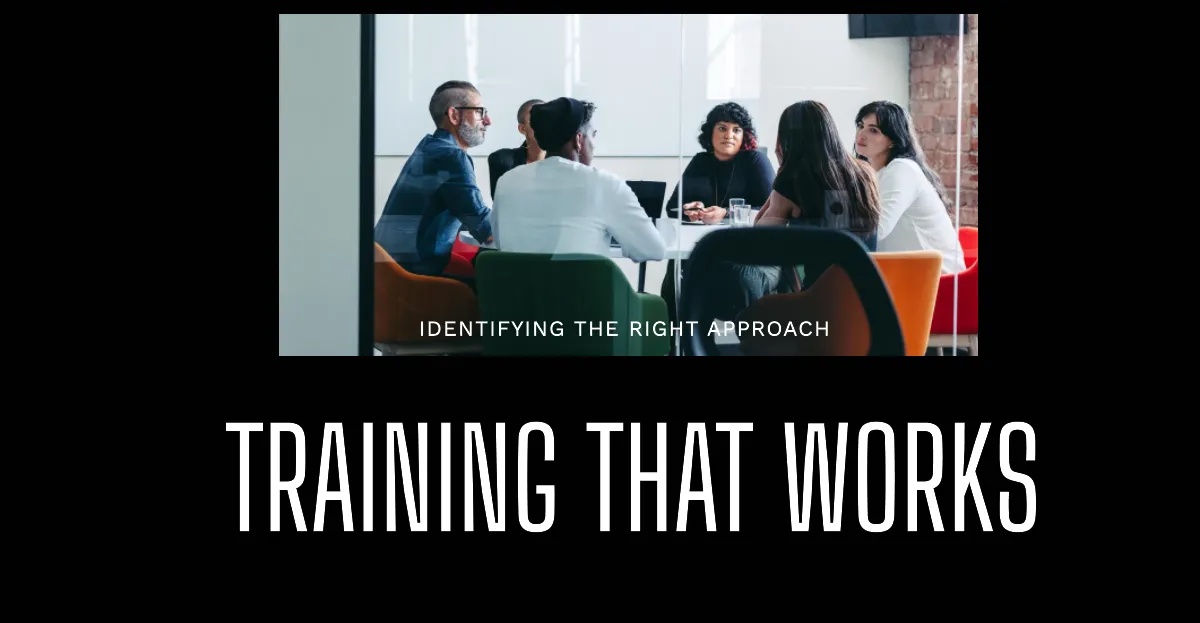Are you feeling stuck in your career? Do you struggle with negative self-talk or lack confidence in your abilities? It’s time to shift your mindset and unlock your potential. Mindset training for employees can help you break free from limiting beliefs and unleash your full potential.
Mindset training is about cultivating a growth-oriented mindset that allows you to embrace challenges, learn from failures, and thrive in any situation. By developing a positive mindset, you can become more resilient, adaptable, and confident in the face of change. Whether you’re an entry-level employee or a seasoned executive, mindset training can help you reach new heights in your career and personal life. So why wait? Let’s dive into the world of mindset training and discover how it can transform your life.
Table of Contents
Key Takeaways
- Mindset training can help employees unleash their full potential by breaking free from limiting beliefs and cultivating a growth-oriented mindset.
- Developing a positive mindset can make employees more resilient, adaptable, and confident in the face of change.
- Customized training programs can be tailored to suit the team’s unique needs and skill levels, creating a sense of ownership among employees and allowing for flexibility.
- Defining KPIs is crucial in tracking progress and identifying areas for improvement, and metrics such as completed courses, attitude changes, or a decrease in turnover rate can be used to measure success.
Understanding the Importance of Mindset Training
Mindset training is like a key that unlocks the door to success, allowing you as an employee to see beyond your current limitations and reach new heights. It’s not just about learning new skills or acquiring knowledge – it’s about changing the way you think and approach challenges. Your mindset can either hold you back or propel you forward, and that’s why mindset training is so important.
When you understand the importance of mindset training, you’ll realize that it’s not just something nice to have – it’s essential for your personal growth and professional development. By developing a growth mindset, you’ll be able to embrace challenges, learn from failures, and continuously improve yourself. This will not only make you more effective at work but also help you lead a more fulfilling life.
The benefits of mindset training go beyond individual growth – they extend to the entire organization. When employees have a growth mindset, they’re more likely to collaborate, innovate and take calculated risks. They’re also better equipped to handle change and uncertainty in today’s fast-paced business environment. So by investing in mindset training for your employees, you’re not only helping them grow but also building a stronger company culture.
Understanding the importance of mindset training is key to unlocking your full potential as an employee. It can help you develop a growth mindset that will enable you to overcome challenges, learn from failures and continuously improve yourself. Moreover, it can foster collaboration, innovation, and resilience within your organization leading to overall success. So take advantage of this opportunity for personal and professional development – invest in yourself through Mindset Training!
Identifying the Right Training Approach

When it comes to training your employees, choosing the right methodology can make all the difference. You want a program that is customized to meet your specific needs and goals. By designing tailored training programs, you can ensure that your team has the tools and knowledge they need to succeed in their roles.
Choosing the Right Training Methodology
Picking the best training methodology is crucial in ensuring that your employees are engaged and motivated throughout the process. There are several factors to consider when selecting the appropriate approach, such as the learning objectives, budget, and employee preferences.
To help you make a more informed decision, here’s a table outlining some of the most effective training methods based on their benefits and limitations:
| Methodology | Benefits | Limitations |
|---|---|---|
| In-person training | Personalized attention, Hands-on experience | High costs, Limited reach |
| E-learning courses | Flexibility, Cost-effective | Self-paced learning may not suit everyone |
| Gamification | Engaging and having fun, Boosts retention rates | May not be suitable for serious topics |
By analyzing these different approaches based on their respective advantages and disadvantages, you can choose one that aligns with both your business needs and employee preferences. Remember that investing in proper mindset training will ultimately lead to increased productivity, better job satisfaction among your team members, and improved overall business performance.
Designing Customized Training Programs
To create a personalized training experience, you can tailor programs to suit your team’s unique needs and skill levels. This means identifying the specific areas where they need improvement and designing training modules that cater to those requirements. By doing so, you can ensure that your employees are fully engaged in the learning process and are more likely to retain information.
Designing customized training programs also helps create a sense of ownership among your employees. When they feel like their skills are being developed in ways that benefit them directly, they become more invested in the company’s success. Additionally, personalized training allows for flexibility, which is crucial for teams with varying schedules or workloads. By offering different types of training sessions at various times throughout the day or week, you can accommodate everyone’s needs and make it easier for them to attend without disrupting their daily routines.
Encouraging Positive Thinking

When it comes to encouraging positive thinking in your employees, two key points to focus on are cultivating a growth mindset and promoting self-motivation. By emphasizing the importance of continuous learning and development, you can help your team members view challenges as opportunities for growth rather than obstacles to be avoided. Additionally, by fostering a sense of personal responsibility and ownership over their work, you can inspire them to take initiative and stay motivated even when faced with adversity.
Cultivating a Growth Mindset
You can really develop your potential by embracing a growth mindset and believing in your ability to learn and grow. Cultivating a growth mindset means understanding that intelligence and abilities can be developed through dedication and hard work, rather than being fixed traits.
This mindset encourages taking on challenges as opportunities for growth, learning from failures, seeking out feedback, and putting in the effort to improve. By adopting this approach, you become more resilient and open to new ideas, allowing you to adapt quickly to changes in the workplace. Ultimately, cultivating a growth mindset will help you reach your full potential and achieve greater success in both your personal and professional life.
Promoting Self-Motivation
If you’re looking to boost your productivity and drive, it’s important to focus on promoting self-motivation and finding ways to ignite your passion for your work. Self-motivation is the key to achieving success in any field. It helps you stay focused, energized, and driven even when things get tough. To promote self-motivation among employees, you can encourage them to set clear goals and create a plan of action that will help them achieve those goals.
Another way to promote self-motivation is by providing opportunities for personal development. This could be through training programs, mentorship opportunities, or exposure to new challenges. When employees feel that they are growing both professionally and personally, they are more likely to stay motivated and engaged with their work. By promoting self-motivation among employees, organizations can create a culture of high performance where everyone is working toward achieving their full potential.
Developing Resilience

Developing resilience is crucial in the workplace, especially when it comes to building coping mechanisms, handling stress and pressure. You may face difficult situations that require you to stay calm and focused, and learning how to manage your emotions can greatly impact your success. By developing these skills, you’ll be able to bounce back from setbacks more easily and continue to grow both professionally and personally. So let’s dive into some strategies for building resilience in the workplace!
Building Coping Mechanisms
By building a strong foundation of coping mechanisms, you can become better equipped to handle any challenges that come your way. Coping mechanisms are essentially skills and strategies that help you manage stress and difficult emotions. They can range from simple techniques like deep breathing and positive self-talk to more complex methods like cognitive-behavioral therapy.
It’s important to remember that everyone copes differently, so it’s important to find what works best for you personally. By regularly practicing coping mechanisms, you’ll be better prepared to face difficult situations and will have more control over your emotional state. So take the time to explore different coping techniques and develop a toolbox of strategies that work specifically for you. By doing so, you’ll be able to navigate any obstacles with greater ease and confidence.
Handling Stress and Pressure
When you experience stress and pressure, it’s important to take a step back and assess the situation objectively before reacting impulsively. One technique that can help with this is called “box breathing”. This involves taking slow, deep breaths while visualizing a square with four sides. As you inhale, picture yourself drawing one side of the square; as you hold your breath, visualize drawing another side; as you exhale, draw the third side; and as you hold again, complete the square by drawing the fourth side. Repeat this cycle several times until you feel calmer and more centered.
Another helpful tool for handling stress and pressure is to practice gratitude. Take a moment to think about all of the things in your life that you’re thankful for – big or small. Write them down if it helps. This simple exercise can shift your focus away from negative thoughts and emotions and help put things into perspective. Remember that everyone experiences stress and pressure at some point in their lives. By developing coping mechanisms like box breathing and gratitude practices, you can learn to handle these situations with greater ease and resilience.
Creating a Supportive Environment
To foster a supportive environment, it’s important to prioritize positive communication within the workplace. Did you know that according to Harvard Business Review, employees who feel they have strong relationships with their colleagues are more engaged and productive?
To create this kind of environment, try implementing these strategies:
- Encourage open communication: Employees should feel comfortable expressing their thoughts and feelings without fear of judgment or repercussions. Create opportunities for team-building activities or one-on-one meetings where employees can share feedback and ideas.
- Celebrate wins together: Recognizing individual achievements is important but celebrating team successes can help build camaraderie and a sense of unity. Consider hosting events like company-wide outings or small celebrations in the office.
- Provide resources for support: Stressful situations can arise in any workplace, so it’s important to provide resources for employees to seek support when needed. This could include access to an employee assistance program or mental health resources.
Creating a supportive environment takes effort, but the benefits are worth it. When employees feel supported by their colleagues and employers, they’re more likely to be motivated and engaged in their work. By prioritizing positive communication, celebrating successes together, and providing support resources when needed, you can build a workplace culture that promotes growth and success for everyone involved. Remember that fostering a supportive environment isn’t just good for your employees – it’s also good for business!
Measuring the Success of Mindset Training

As you continue to invest in mindset training for your employees, it’s important to have a clear understanding of how to measure its success. Defining key performance indicators (KPIs) is crucial in tracking progress and identifying areas for improvement. In addition, measuring the return on investment (ROI) of mindset training can provide valuable insight into the impact it’s having on your organization. Keep these factors in mind as you develop a strategy for evaluating the effectiveness of your training program.
Defining Key Performance Indicators (KPIs)
You’ll want to define KPIs clearly so that you can track your progress and see how well you’re meeting your goals.
Here are some tips for defining KPIs for mindset training:
- Start by identifying the objectives of the mindset training program. What specific behaviors or attitudes do you want employees to exhibit after completing the program?
- Determine which metrics will be used to measure success. Will it be the number of completed courses? Surveys measuring attitude changes? Decrease in the turnover rate?
- Set achievable targets for each metric, based on realistic expectations and past performance.
- Continuously monitor and adjust KPIs as needed to ensure that the mindset training program is meeting its objectives.
By defining clear KPIs, you can more effectively measure the success of your mindset training program and make data-driven decisions about how to improve it over time. Remember, a growth mindset involves continuously learning and improving – this applies not only to employees but also to the programs designed to help them develop their mindsets!
Measuring the ROI of Mindset Training
Just like a gardener measures the return on investment of their time and resources by analyzing the growth and yield of their plants, measuring the ROI of mindset training involves evaluating the impact it has on company performance and productivity. To start measuring your ROI, you need to establish clear objectives for your employee mindset training program. These objectives should be aligned with your organization’s goals, values, and mission.
Once you have established your objectives, you can measure the ROI of your program using various metrics such as increased sales revenue, reduced turnover rates, improved customer satisfaction scores, etc. Below is an example table that can help you track the progress and effectiveness of your mindset training program:
| Metric | Before Training | After Training | Improvement |
|---|---|---|---|
| Sales Revenue | $100k | $125k | 25% increase |
| Employee Turnover Rate | 20% | 10% | 50% decrease |
| Customer Satisfaction Score | 80/100 | 90/100 | 10 point increase |
By tracking these metrics over time, you can determine whether or not your mindset training program is producing positive results and providing a good return on investment. Keep in mind that investing in employee development is not just about increasing productivity but also creating a culture where employees feel valued and motivated to give their best effort every day.




